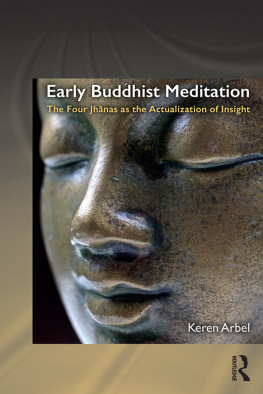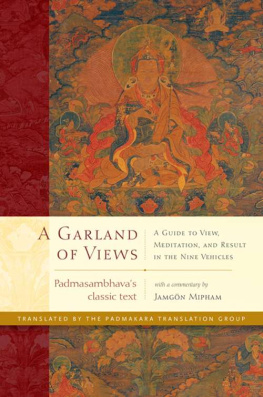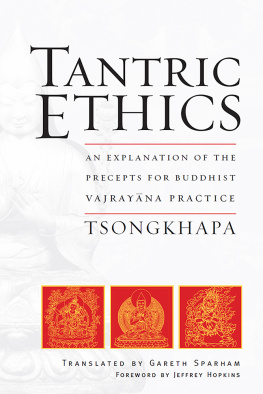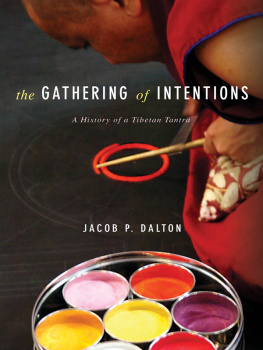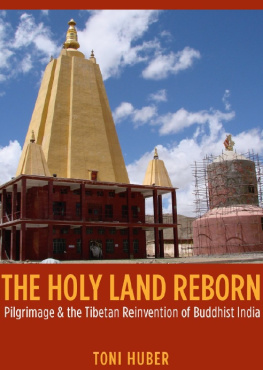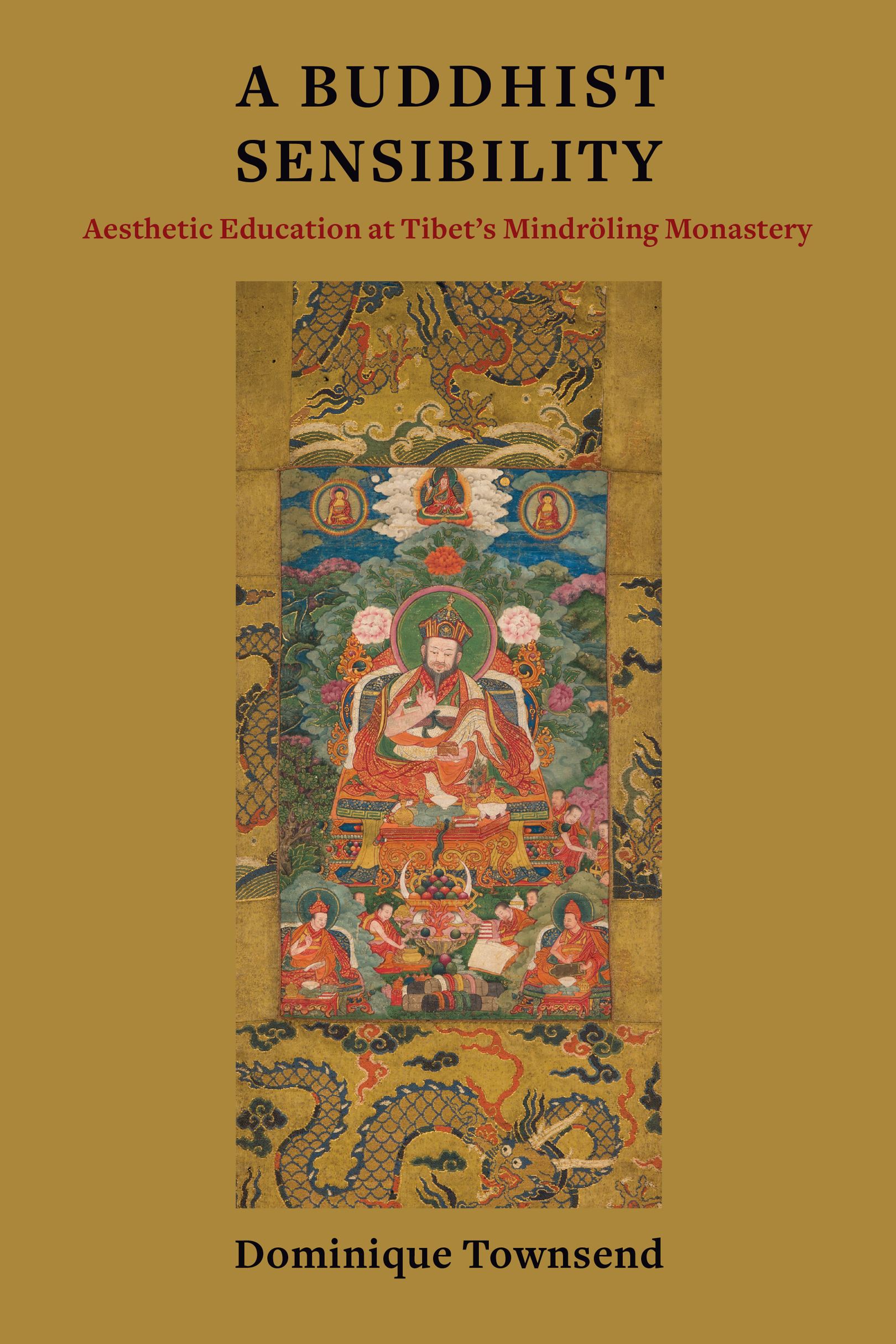Contents
Guide
Pagebreaks of the print version
A Buddhist Sensibility
STUDIES OF THE WEATHERHEAD EAST ASIAN INSTITUTE,
COLUMBIA UNIVERSITY
STUDIES OF THE WEATHERHEAD EAST ASIAN INSTITUTE,
COLUMBIA UNIVERSITY
The Studies of the Weatherhead East Asian Institute of Columbia University were inaugurated in 1962 to bring to a wider public the results of significant new research on modern and contemporary East Asia.
For a complete list of titles, see .
A BUDDHIST SENSIBILITY
Aesthetic Education at Tibets Mindrling Monastery
DOMINIQUE TOWNSEND

COLUMBIA UNIVERSITY PRESSNEW YORK
Columbia University Press
Publishers Since 1893
New YorkChichester, West Sussex
cup.columbia.edu
Copyright 2021 Columbia University Press
All rights reserved
E-ISBN 978-0-231-55105-2
Library of Congress Cataloging-in-Publication Data
Names: Townsend, Dominique, author.
Title: A Buddhist sensibility : aesthetic education at Tibets Mindrling Monastery / Dominique Townsend.
Other titles: Materials of Buddhist culture
Description: New York : Columbia University Press, [2021] | Series: Studies of the Weatherhead East Asian Institute, Columbia University | Revision of authors thesis (doctoral)Columbia University, 2012, titled Materials of Buddhist culture : aesthetics and cosmopolitanism at Mindroling Monastery. | Includes bibliographical references and index.
Identifiers: LCCN 2020028555 (print) | LCCN 2020028556 (ebook) | ISBN 9780231194860 (hardback) | ISBN 9780231194877 (trade paperback)
Subjects: LCSH: Smin-grol-gling (Monastery : Tibet Autonomous Region, China) | AestheticsReligious aspectsBuddhism. | Buddhism and artChinaTibet Autonomous Region. | Buddhist monasticism and religious ordersEducation ChinaTibet Autonomous Region.
Classification: LCC BQ6349.S59 T69 2021 (print) | LCC BQ6349.S59 (ebook) | DDC 294.3/709515dc23
LC record available at https://lccn.loc.gov/2020028555
LC ebook record available at https://lccn.loc.gov/2020028556
A Columbia University Press E-book.
CUP would be pleased to hear about your reading experience with this e-book at .
Cover image: Early eighteenth-century portrait of Terdak Lingpa, with his brother Lochen Dharmar (bottom left) and son Pema Gyurm Gyatso (bottom right), attended by monks handling material offerings.
Courtesy of Rubin Museum of Art
Contents
Mindrling exterior circa 2007
Ny ancestor
Wall painting of Padmasambhava from Mindrling monastery
Terdak Lingpa with monks and family members
Calligraphy from Mindrling monastery pillar
Dharmar
Amityus with the Fifth Dalai Lama and Terdak Lingpa
The Fifth Dalai Lama
The young Terdak Lingpa
Mindrling interior circa 2009
Lukhang mural with Mindrling students
Pema Gyurm Gyatso
Mingyur Peldrn
Verso of cover painting of Terdak Lingpa, Pema Gyurm Gyatso, and Lochen Dharmar
Researching and writing this book has been a long and enriching process made possible by the generosity and guidance of many friends and colleagues. By a certain reckoning I started the project in 1997 as a college student traveling in India, Nepal, and Tibet, when I became interested in the history of women teachers at Mindrling. I soon learned about the tradition of laypeople studying there, which led me to the monasterys fame for Great Perfection, the literary arts, and medicine. This prompted me to investigate the history of training in the arts and ritual practices more broadly. My circuitous line of inquiry led me to become interested in the monasterys historical political connections, and from there I became interested in cultural and national identity. The framework of aesthetics occurred to me as one that could contain many aspects of Mindrling in a new and productive way. This ongoing process of discovery continues, as does my fascination with the phenomenon of Mindrling and my admiration for the people whose lives and work this book explores. As this brief summary suggests, Mindrling is a vast and complex subjectno single history can attend to its every aspect. I have been guided by my interests as well as by the serendipity of research findings, interpersonal relationships, and lacunae in the field of Tibetan Buddhist studies. Being interested in diverse topics required that I seek out the expertise of many people, only some of whom I can name here.
Im grateful to Gray Tuttle, who believed unwaveringly in the value of this project from the beginning of my graduate studies and provided a steady flow of insightful questions and historiographical guidance. Janet Gyatsos keen observations over the years pushed the research and sharpened the writing immeasurably. Discussing the ideas that fuel this project with them has been one of the greatest pleasures of my career thus far. I offer my deep thanks also to Bernard Faure, Michael Puett, and Chn-Fang Y for their input through the process of this books first life as my dissertation. Robert Thurman introduced me to Tibetan Buddhist studies as an undergraduate and read through the Dalai Lamas letters with me as a doctoral candidate. Reading and debating the Tibetan with him was a joy. Leonard van der Kuijps comments on the early research papers that seeded the book helped me clarify the historical context. Tashi Tsering generously shared insights and materials with me. Hubert Decleers love for Tibetan texts and his ethical commitments to scholarship sparked my excitement for developing my own research methodologies. Gene Smiths wondrous knowledge and endless enthusiasm fueled my interest in Mindrling, and his enticing clues and suggestions are still bearing fruit.
Over the years Pema Bhum has read countless Tibetan texts with me, shared references, and fielded my questions and theories with erudition, insight, curiosity, and humor. Lauran Hartley has provided structural support and resources at every turn. During the revision process, Riga Shakya provided valuable perspective on lay biographies in Tibetan literature. He also contributed some outstanding translations to the first part of . Sean Price generously shared hard to find sources with meI only wish Id had more time to make use of them! Lama Gyurme shed light on the monastic curriculum and on the history of the murals and architecture of the temples in Tibet. He also told me illuminating stories about his life as a monk and artist at the monstery. Thanks to Berthe Jansen, who generously shared her knowledge of Mindrlings history with me, and whose expertise on monastic guidelines helped me understand Mindrling in sociological context. My thanks to Kunchog Tseten, whose expertise on Mindrlings medical tradition was a boon in my final stages of writing. I am also grateful for Chime Lamas feedback as a reader. Thanks to Sam Brawand for expert attention to the many details of preparing the manuscript for publication. Thanks also to everyone at TBRC/BDRCJann Ronis and Nawang Trinley, especially.
Many more scholars and friends have read and responded to drafts of chapters or related articles and conference papers and discussed the books themes with me. Im indebted to Julie Regan, Annabella Pitkin, and Ben Bogin, who all read advanced chapter drafts. Thanks too to Holly Gayley, Nicole Willock, Sarah Jacoby, Lama Jabb, Charlene Makley, Jake Dalton, Andy Quintman, Kurtis Schaeffer, Nancy Lin, Christie Kilby, Michael Sheehy, Joshua Shapiro, Alex Gardner, Benno Weiner, Michael Monhart, Peter Moran, Bryan Cuevas, and Douglas Duckworth. Im grateful to the curators and staff at the Rubin Museum, who enhanced my appreciation for Mindrlings visual arts. Im deeply grateful for the institutional and community support of Bard College. My brilliant colleagues there have helped me develop this book for an interdisciplinary readership.



